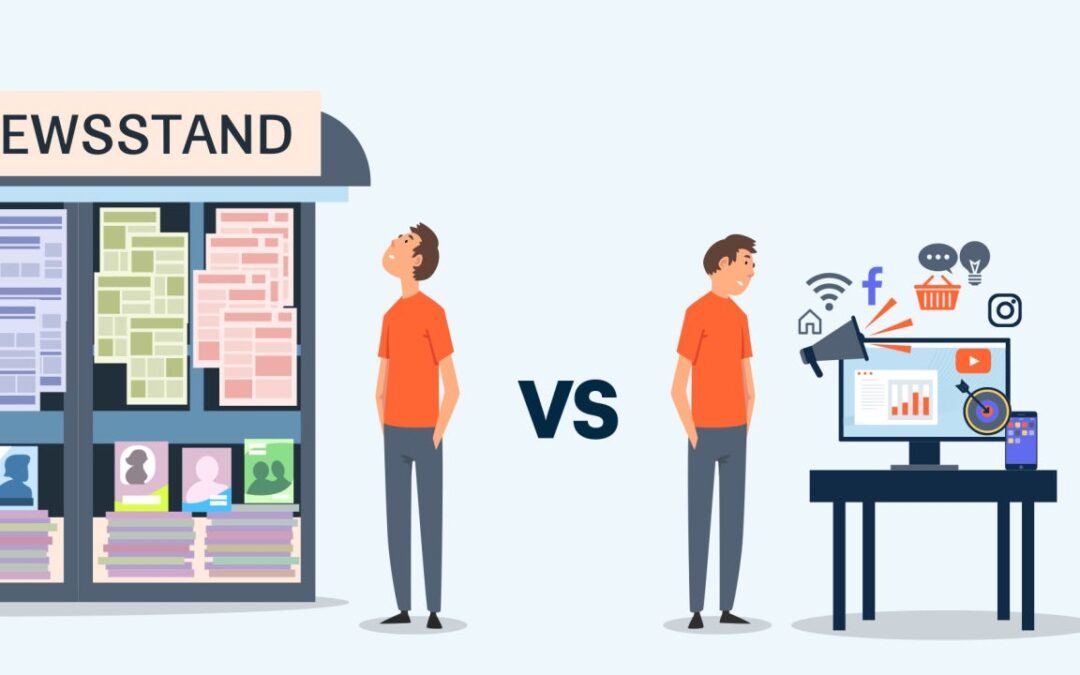Now that we understand what these two forms of marketing are, let’s take a deeper dive into what makes them different, aside from the fact that one is digital and one is not.
The digital nature affects a whole lot more than where the brand message shows up.
- Target audience – With traditional marketing, it’s fairly easy to reach people in certain locations and of certain demographics. However, digital marketing allows for global reach while also better narrowing the targeting towards interests and other specific attributes.
- Audience engagement – With digital marketing, people can reply to and comment on many different types of digital media and campaigns. With traditional marketing, it is a one-sided conversation.
- Cost efficiency – Traditional advertising tends to cost more and be harder to scale. The physical nature of the campaigns simply ads costs. Digital marketing provides a better range of options for affordability and resource requirements. (For example, organic content marketing has labor costs but not placement costs.)
- Speed of results – With traditional marketing, it can take longer to know the efficiency of a campaign. A digital ad gives an immediate click-through rate, but with traditional marketing, you’re waiting for the phone to ring or someone to come into the shop.
- Attribution and decision making – It can be much harder to attribute the success of new sales to a traditional campaign than to digital media. This is why traditional marketing is often used for brand building versus direct sales.
- Audience feedback loop – With more of an open line of communication with digital marketing, it’s easier to know how customers are responding to a campaign. With traditional marketing, brand managers are often just waiting and hoping they don’t get negative feedback in the form of a tweet that goes viral. This is why more money and energy is poured into focus groups and market research previous to launching a big traditional campaign. By the time a traditional campaign actually reaches its target audience, it’s typically too late to fix flubs.


Recent Comments